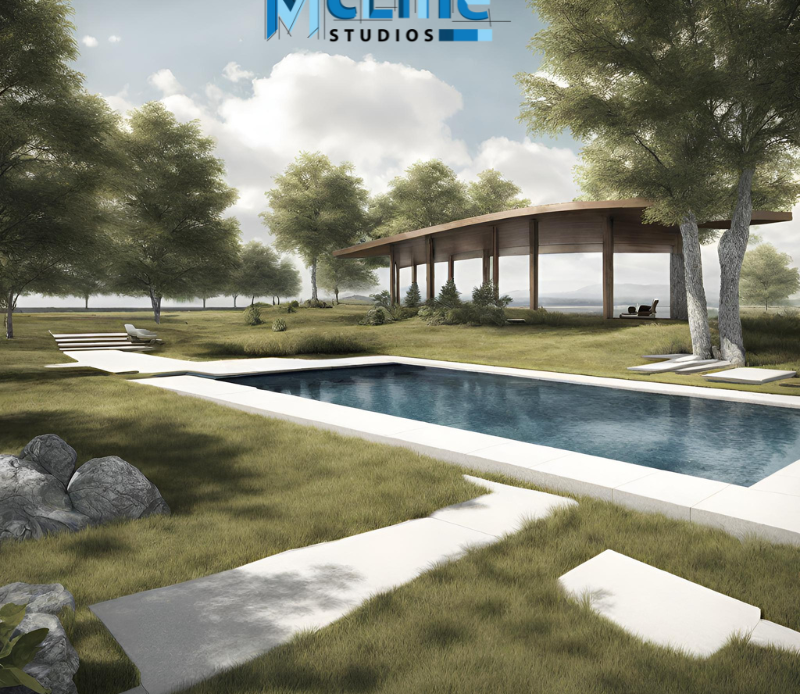Rendering realistic landscapes in computer graphics is a complex process that involves various techniques and algorithms. Whether you’re creating a breathtaking vista for a video game, an architectural visualization, or a movie scene, the goal is to generate an image that accurately represents the natural world.
Landscape rendering involves using computer graphics technology to craft lifelike and visually captivating depictions of natural settings, including mountains, forests, and bodies of water. This technique is widely used in video games, films, and architectural visualizations to provide immersive and believable virtual environments
Furthermore, this article will explore the fundamental concepts and methods used in landscape rendering, including terrain modeling, texturing, lighting, and atmospheric effects.
Fundamental Concepts Of Landscape Rendering
Landscape rendering involves creating realistic representations of outdoor environments, whether for artistic purposes, architectural design, or entertainment media like video games and movies. Here are some fundamental concepts:
Terrain Generation: Creating realistic landscapes involves generating terrain features like mountains, valleys, and plains, either through procedural algorithms or manual modeling.
Vegetation Simulation: Rendering vegetation convincingly involves not just modeling plants but also simulating their growth patterns, interactions with wind, and responses to environmental factors like sunlight and water availability.
- Lighting and Shadows: Realistic lighting is essential for conveying depth and mood in landscape renderings. Simulating sunlight, shadows, ambient lighting, and atmospheric scattering adds realism to the scene.
- Texture Mapping: Applying textures to terrain and vegetation adds detail and visual interest. Techniques like texture blending and normal mapping enhance the realism of the landscape.
- Water Rendering: Bodies of water like rivers, lakes, and oceans require special attention to simulate reflections, refraction, waves, and surface effects such as foam and ripples.
- Atmospheric Effects: Incorporating atmospheric effects like fog, haze, and atmospheric perspective adds depth and realism to landscape renderings, enhancing the sense of scale and distance.
- Dynamic Weather Systems: Dynamic weather systems, including rain, snow, and clouds, contribute to the realism and immersion of landscape scenes, requiring simulation of weather patterns and effects.
- Optimization Techniques: To ensure smooth performance, especially in real-time applications like games, optimization techniques such as level of detail (LOD), occlusion culling, and batching are employed to manage rendering complexity and resource usage efficiently.
Method Of Producing a Landscape Render
Producing a landscape render typically involves using specialized software like 3ds Max, Blender, Sketch-Up, or other similar programs. Here’s a general method:
- Gather References: Collect reference images or sketches of the landscape you want to recreate. These references will guide your modeling, texturing, and lighting.
- Modeling: Start by creating the basic shapes of your landscape. You can use various techniques like sculpting, extruding, or using terrain generators to create mountains, valleys, and other landforms.
- Texturing: Apply textures to your landscape to give it realistic detail. This involves adding materials like grass, rock, sand, or snow to different areas based on your references.
- Lighting: Set up your lighting to create the desired mood and atmosphere for your landscape. Consider the time of day and the position of the sun or other light sources.
- Rendering: Use the rendering engine of your chosen software to generate a high-quality image of your landscape. Adjust settings like resolution, anti-aliasing, and global illumination to achieve the desired result.
- Post-Processing: After rendering, you can further enhance your image using post-processing techniques like color grading, adding depth of field, or adding atmospheric effects.
The Final Note
In summary, landscape rendering is a complex process that involves several steps to create realistic and visually appealing 3D environments. It starts with modeling the terrain, which involves generating a height map and applying textures and materials to create the desired look.
Next, various landscape features like trees, rocks, and water are added to the scene. Lighting plays a crucial role in enhancing realism, with techniques like global illumination and real-time shadows adding depth and authenticity.
Post-processing effects, such as atmospheric scattering and depth of field, further improve the visual quality. Finally, level of detail techniques and occlusion culling optimize performance by rendering only the necessary details based on the camera’s view.



